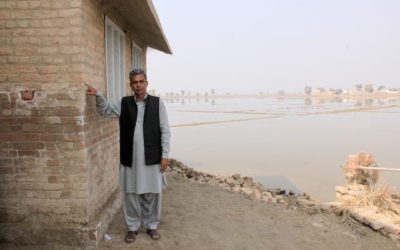Climate change and migration: predictions, politics and policy
A new online course, focused on the links between climate change and migration. Study online, for free – and get to grips with one of defining global issues of the 21st century
Climate change and migration: predictions, politics and policy
Congratulations, your’re enrolled.
We’ll be in touch soon with details of the first session.
COMPLETELY ONLINE
Take part in the course online, via live stream
FLEXIBLE
Take part at your own pace. Join the sessions live, or catch up with lecture recording in your own time
TIME COMMITMENT
The course runs betwen February and November 2019, with one session per month. Each session is two hours. The likely time commitment is therefore only a few hours per month
LEVEL
No previous knowledge is required
FREE
There is no fee to participate
About this course
Climate change is set to play a key role in patterns of human settlement and migration in the future. Altered patterns of drought, storms and sea level rise are already creating new patterns of migration.
This course is intended for anyone wishing to tackle a major global issue.
The course is completely online. You can join the sessions via live stream from your computer. The sessions will provide roughly an hour of lecture input, followed by a chance for discussion. If you can’t join the sessions live, you can watch them online anytime, at your own pace. Each session also comes with a collection of recommended reading and watching, so you can investigate the themes and ideas further if you wish.
Course themes
Sessions 1 -3 – getting started
These sessions provide grounding in the links between climate change and migration, as well as research methods used to explore the role of climate change in shaping the human movement.
Sessions 4 -6 – politics
These sessions look at the key political ideas that are shaping how climate migration unfolds, who is impacted and how governments are responding.
Sessions 7 and 8 – policy
These sessions look at the key policy areas where decisions about climate-linked migration are being taken. These sessions look at the major international fora where states negotiate on this issue.
Sessions 9 and 10 – complex crises
These sessions use the tools and learning from the entire course to examine several complex humanitarian crises in which climate change has played a role. They will look at how climate change has created and influenced human movement in and around the impacted areas.
Course sessions and dates
Getting started: what does climate-linked migration look like? February 14th 2019
The very big picture. A very brief history of migration and climate change. March 14th 2019
What do we know? And what does the future hold? April 18th 2019
Politics 1: Neoliberalism. May
Politics 2: Our unequal world. June
Politics 3: Security - for who? July
Policy 1: key policy issues. August
Policy 2: policy processes and decision-making. September
Complex crises 1: Syria and the Rohingya. October
Complex crises 2: The Pacific Islands and the Horn of Africa. November
FAQ
Does the course cost anything?
The course is completely free
How much time will it take up?
There is one session per month. Each session is roughly 2 hours long. The minimum time is, therefore, two hours, but you can pursue your own interests and follow up using the recommended reading from each session
What equipment do I need?
You need a device with a screen and an internet connection. To join the sessions live, your device will need to be able to access our webinar platform ‘Zoom.’ You can check the device requirements here. To catch up with the sessions later, you’ll need a device that can play Youtube videos.
Are there any prerequisites?
No, you don’t need any previous qualifications. We don’t assume you have any previous experience in this field.
Is the course accredited by an academic institution?
No
How often are you going to email me?
About twice per month. We’ll email you just before the live sessions with a login and joining instructions. We’ll also email you just after the sessions when the recording is online. We might need to email you if there are any last minute changes. Your details will be kept in accordance with our Privacy Policy
Is there any assessment?
No, there is no requirement to complete or submit work for assessment
“Diving Near Slums of Cebu City Philippin” (CC BY-NC-ND 2.0) by AdamCohn
“Pakistan Floods – 6 months on” (CC BY-NC-ND 2.0) DfiD / Russell Watkins
Climate change and migration: predictions, politics and policy
Get to grips with one of the defining issues of the 21st Century – how will climate change re-shape migration across the world. Join a free, 100% online course to investigate this essential topic
Event: Migration and displacement at the climate talks
How are migration and displacement being dealt with at the international climate change talks? Find out more with our online event
Event: Climate change and Migration 101. 4 December
Get to grips with the links between climate and the movement of people
Event: hot wars- Climate change, armed conflict and security. 15 November
What do we know about the links between climate change and conflict? Will life on a hotter planet be on with more armed violence?
Briefing: climate change and migration. 24 October, London
An evening briefing exploring the links between climate change and migration. Find out more and book places. 24 October, London
Workshop on climate change and migration. 16 October, London
Workshop on climate change and migration. A half-day session exploring the links between climate change and migration. 16 October, London





